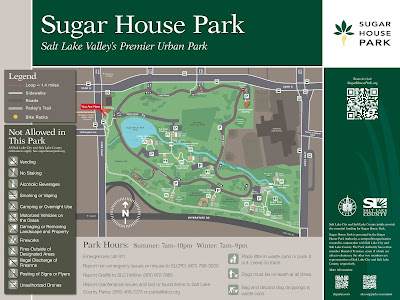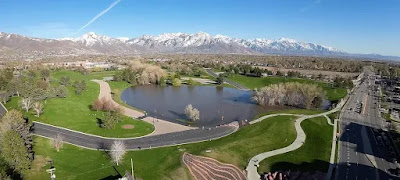WMATA's latest bus improvement program
is discussed by WTOP, "Metro’s future of bus service could bring new routes and end some familiar stops."
When I first saw coverage I thought, "what about the 2017" initiative, although granted it was before covid. And when thinking about writing about it, I remembered a bus initiative back in 2006 too. But of course, conditions have changed greatly since then.
WRT bus service improvement see:
-- "Making bus service sexy and more equitable," 2012
-- "Will buses ever be cool? Boston versus the Raleigh-Durham's GoTransit Model," 2017
-- "Route 7 BRT proposal communicates the reality that the DC area doesn't adequately conduct transportation planning at the metropolitan-scale," 2016
-- "Reviving DC area bus service: and a counterpoint to the recent Washington City Paper article," 2019
From the article:
With additional funding, Webster said the new bus network could bring 30-minute frequency for most routes, 30 new routes that would increase connections with Metrorail stations and a regionwide 24-hour bus network, which would provide overnight connections to the region’s airports.
San Francisco Bay overnight transit map.
And with that I had to laugh. I've been suggesting that for at least 12 years.
-- "Overnight transit service," 2012
-- "Night moves: the need for more night time (and weekend) transit service, especially when the subway is closed," 2013
-- "Night and weekend transit/subway service," 2016
-- "Overnight transit service: San Francisco," 2016
The 2013 entry states that bus service should be provided to airports when Metrorail is closed. Also see:
-- "To and from origin stations can be difficult: More on the Silver Line and intra-neighborhood transit (tertiary network)," 2022
-- "More on airport-related transit/transit for visitors," 2013
-- "To get people who have mobility choices to choose transit, they have to know it exists," 2007
The points in this entry, although ostensibly about light rail, are really about the value of a transit network, and by extension the value of the transit network as a 24 hour service.
Related is the blog entry "Branding's NOT all you need for transit" (2018) which discusses transit as a "design product"
ensuring that each and every element within the system of providing transit and mobility services is designed to be effective, efficient, successful, powerful and connected.
DC has a long way to go for that, which is why I suggest a German style "transport association" be created to integrate the services.
At some point, I wrote that it would be easy to provide transit service to National Airport overnight by extending the bus service on 14th Street. And that a late night bus network needs to include Union Station in DC as a primary node.
========================
FWIW, in the Purple Line series ("Setting the stage for the Purple Line light rail line to be an overwhelming success: Part 2 | proposed parallel improvements across the transit network," 2017), I made a bunch of recommendations wrt bus service, although I'm glad some of the improvements will happen before 2028, when the Purple Line opens.
9. Provide integrated bus arrival and departure information screens at Metrorail, Light Rail, and MARC stations.
10. Bus service in certain corridors between DC and Maryland should be extended and/or frequency increased to better link these areas to the new light rail service.
Many of the area's bus services terminate at the city-state line, although there are some exceptions. DC and Maryland should commit to bus service improvements in advance of the PL launch.
11. Montgomery County bus system improvements with the launch of the Purple Line and bi-directional service on the MARC Brunswick Line should include launch of planned Bus Rapid Transit services.
12. Rearticulate, rebrand, and reposition-extend the Prince George's County TheBus bus transit service. Change the name of the service and the graphic design of the bus livery.
They have the same opportunity for rearticulation with their complementary local transit system. Currently, TheBus system is the least well developed of the suburban transit agencies ("By choosing coverage over frequency, Prince George’s caps what its buses can accomplish," GGW).
But they are now working on improving the system, with a Transit Transformation initiative they launched last fall.
13. Consider a redesign and rebranding of the the metropolitan area's bus systems into an integrated framework, comparable to that of GoTransit in the Raleigh-Durham area.
This has been discussed in depth here, "Will buses ever be cool? Boston versus the Raleigh-Durham's GoTransit Model." This gives a deadline for launch.
From the presentation ("The Sign Design Society Event: Defining a City," designworkplan) by Ivan Bennett, Design Manger for London Buses:
One reason other systems have failed is the lack of continuity. London bus stops extend beyond central areas and cover all routes in Greater London. Ivan indicated that passengers do not just want information about where they are travelling from, but when they get there, they need the same consistently presented information. People need information near their homes and local areas, not just in the centre of the city.
15. Set the opening of the Purple Line as the deadline for the implementation of a full-fledged integrated Night Owl bus network for the DC metropolitan area.
 19. WMATA should upgrade its Metrorail station bus shelters.
19. WMATA should upgrade its Metrorail station bus shelters.
Another aspect of the balkanized transit system in the DC area is that every jurisdiction has a different program for bus shelters--what Ivan Bennett, product design manager for the London bus program, calls "a lack of continuity."
Metrobus isn't responsible for shelters in the various jurisdictions, although WMATA does have bus shelters on the grounds of many Metrorail stations outside the core.
Bus shelters at the Medical Center Metrorail Station.
Unfortunately, the Metrorail station shelters are dowdy, don't incorporate real-time arrival and departure information, could include advertising as a revenue stream, etc.
Why not use the launch date of the Purple Line as an inducement and deadline for an overhaul of the Metrorail bus shelters across the station network?
... although this doesn't address the fact that in an integrated bus service branding system across the jurisdictions, ideally, there would be a common set of transit shelters and amenities across the transit network.
-- Transit Waiting Environments, for the Greater Cleveland Rapid Transit Authority
-- From Here to There: A creative guide for making public transport the way to go, EMBARQ
-- Rethinking the Suburban Bus Stop, Airport Corridor Transportation Association, Pittsburgh
-- First/Last Mile Strategies Study, Utah Transit Authority
The Kansas City Streetcar Smart City "City Post" digital kiosks include a real-time tracker application for the streetcar service ("No need to wonder where streetcar is: Kiosks now offer tracker maps," Kansas City Business Journal). Photo: Andrew Grumke.
Labels: bus transit, busways/transitways, equity, transit infrastructure, transit marketing, transportation planning, urban design/placemaking






.jpg)



.jpg)

.jpg)




.jpg)

.jpg)










.jpg)





